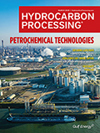Treating
Editorial Comment: Where some see roadblocks, we see opportunities
In the January issue of Hydrocarbon Processing, the editorial comment focused on the roadmap to advancing ideas.
FCC operational changes to boost gasoline octane
The fluid catalytic cracking unit (FCCU) is one of the main units providing gasoline with high-octane numbers to the refinery gasoline pool.
Industry Perspectives: What challenges will 2019 bring to the global HPI?
In the December 2018 issue of <i>Hydrocarbon Processing,</i> we detailed our editorial opinion on the most likely route that shippers will take to adhere to new International Maritime Organization (IMO) sulfur regulations.
Analysis of semi-solid “shoe polish” material in a refinery TGTU
Amine units, and to a lesser extent tail gas treating units (TGTUs), experience occasional “shoe polish” sludge contamination.
Details on high-impact refining and petrochemical projects presently under construction, as chosen by HP editors and readers
The global hydrocarbon processing industry (HPI) continues to expand and modernize to efficiently meet growing demand for energy, transportation fuels and petrochemicals.
Viewpoint: Reducing the sulfur shadow— Who pays the price?
The International Maritime Organization’s (IMO’s) 2020 regulation has been described as the most disruptive change to impact the oil industry in the past 30 yr.
Industry Perspectives: Refining’s real growth is through secondary unit capacity
According to multiple industry reports, the global refining sector will add between 7 MMbpd and 8 MMbpd of new crude distillation unit (CDU) capacity by the early 2020s.
Hydrocarbon Processing Awards
<i>Hydrocarbon Processing,</i> the downstream processing sector’s leading technical publication, has announced the winners for its second annual awards.
Technical considerations for the Heydar Aliyev refinery revamp
The following case study describes the early development phases of SOCAR’s ongoing major revamp project at the Heydar Aliyev Refinery (HAR) in Baku, Azerbaijan, and its interface with the associated Azerikimya (AZK) steam cracking complex near Sumgait. References are made to the related SOCAR polymer project in Sumgayit, as well.
Additive solutions to SOx emissions in FCCUs
Sulfur oxide additives are typically based on hydrotalcite or magnesium aluminate spinel-type structures. Magnesium alumina is the pickup agent present in the most effective SO<sub>x</sub> additives on the market; therefore, to optimize SO<sub>x</sub> reduction, it is critical to maximize the amount of the critical magnesium component in the fluid catalytic cracking unit (FCCU) in an efficient and cost-effective way.

- Evonik presents innovative "Debonding on Demand" concept for more sustainable bonding 4/3
- Oil, gas and refined product imports exempted from Trump’s sweeping tariffs 4/3
- Reliance: India's gasoline demand to peak by 2035, diesel by 2041 4/3
- Mabanaft, HIF Global sign agreement to accelerate e-methanol adoption in the shipping industry 4/3
- Burckhardt Compression awarded digital monitoring services contract for a chemical plant in Saudi Arabia 4/3
- Lummus completes successful startup of electric heater demonstration unit 4/3




